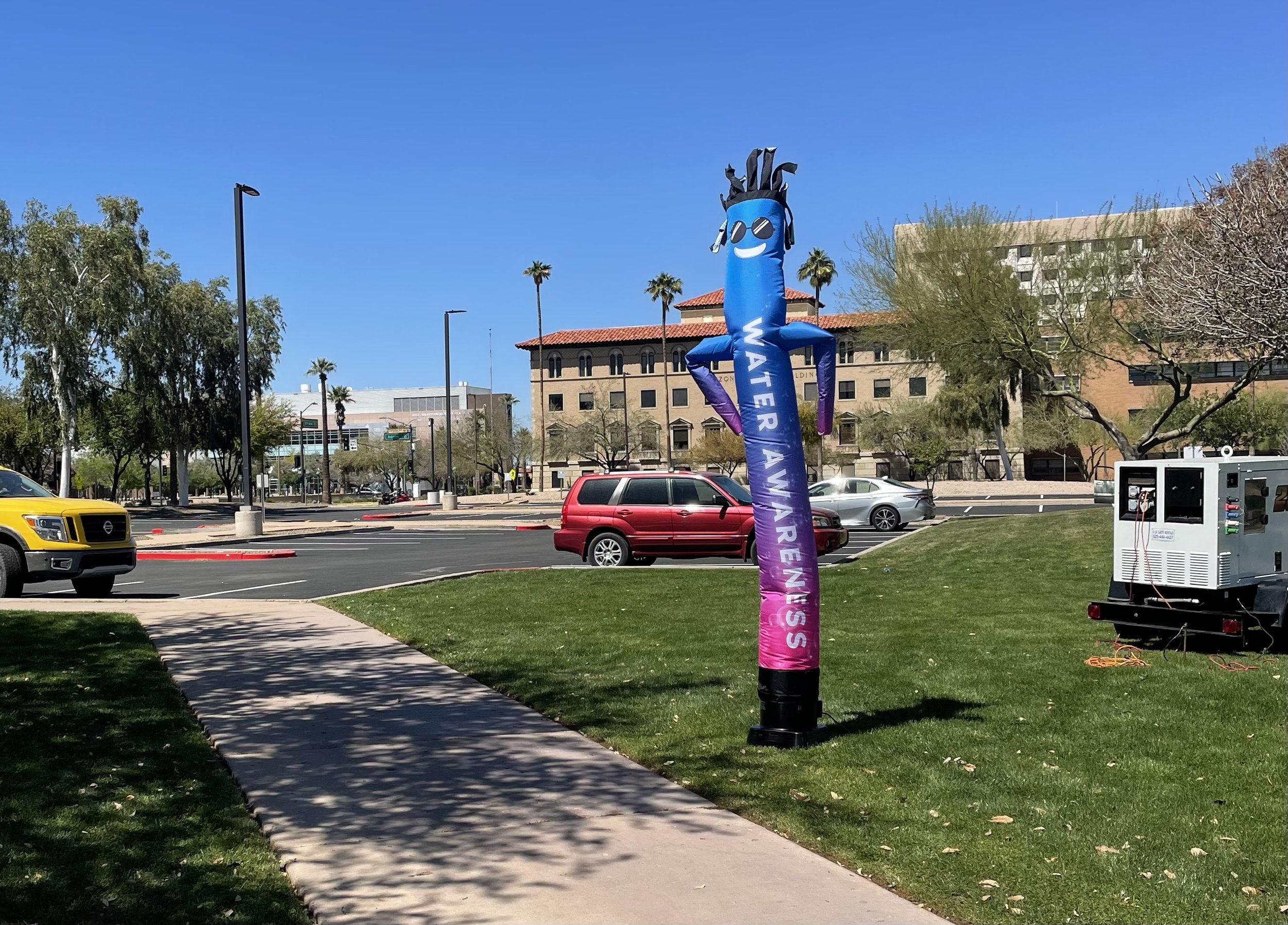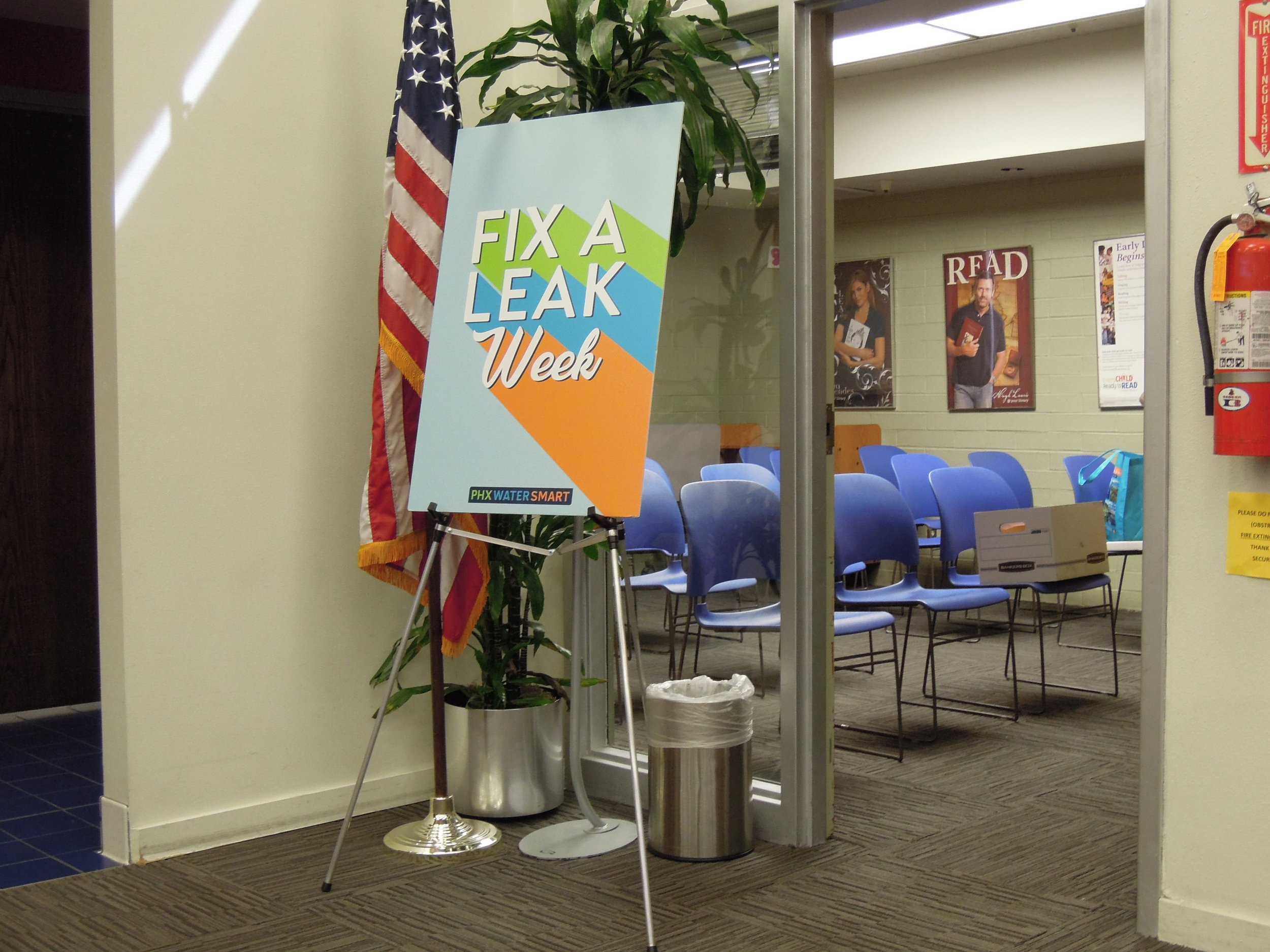
Drought Resilience - Urban Adaptation & Water Conservation
Scroll ↓
From the oasis city to the desert city. Urban adaptation to water scarcity in Phoenix and Tucson (Arizona)
2017 - 2020
In the context of climate change, as droughts intensify and as more areas are subject to high water stress, this dissertation focuses on how to manage the imbalance between water resource availability and growing demand in two metropolises of the arid West of the United States. Located in the Sonoran Desert and built on the model of the oasis city, Phoenix and Tucson take the socio-ecological stakes of water scarcity to the extreme. This study proposes to consider these two cities as laboratories for urban adaptation to climate change to explore competing modalities of adaptation to water scarcity. Using an urban political ecology framework, the goal is to observe and analyze the power struggles between stakeholders involved in water resource management in a context where the system of large hydraulic infrastructures underpinning urban growth is increasingly called into question. This mixed-methods survey brings together critical discourse analysis to deconstruct the dominant arguments and position-takings on water conservation, semi-structured interviews with water sector actors (institutions and environmental activists) and participant observation to question the tensions between discourses and changes in urban practices at the local level for adapting the urban metabolism to a world of less water. This dissertation shows, on the one hand, that adaptation strategies are implemented by dominant actors within the framework of socio-ecological fixes in order to maintain the growth trajectory of particularly attractive cities. On the other hand, it highlights the role that citizen empowerment plays in the emergence of alternatives and shows that environmental alternatives play an important role in regulating resource control strategies and overcoming traditional resource-based management paradigms.
Phoenix, viewed from South Mountain Park (2023)
The research protocol was hybrid and aimed to transcend the qualitative and quantitative research dichotomy. With an approach characteristic of political ecology, it proceeded through case studies (Castree, 2005), placing them within their historical context and taking into account available knowledge of ecological processes, both expert and vernacular. It also considered the interplay of actors at all scales and the cultural and identity constructions of the human-environment relationship. Below you will find the abstracts and links to the main publications of the results, following a chronological order:
Boyer A.L., Juanals B., Minel J.L, (2024), « Débats médiatisés et numériques sur la sécheresse. Le cas des pénuries d’eau dans un climat semi-aride en Arizona », Communiquer [En ligne], 38 | 2024. Open access
This was my doctoral research project, funded by a Contrat Doctoral Spécifique Normalien à l’Ecole Normale Supérieure de Lyon. Full manuscript can be found and downloaded here.
O’Neill, B.F. and Boyer, A.-L. (2023). 'Locking in' desalination in the U.S.-Mexico borderlands: Path dependency, techno-optimism and climate adaptation. Water Alternatives,16(2): 480-508. Open access
Boyer, A. L., Le Lay, Y. F., & Marty, P. (2021). Coping with scarcity: The construction of the water conservation imperative in newspapers (1999–2018). Global Environmental Change, 71, 102387. DOI: https://doi.org/10.1016/j.gloenvcha.2021.102387
Boyer, A. L., Vaudor, L., Le Lay, Y. F., & Marty, P. (2021). Building consensus? The production of a water conservation discourse through twitter: the water use it wisely campaign in Arizona. Environmental Communication, 15(3), 285-300. DOI: https://doi.org/10.1080/17524032.2020.1821743
These results were also discussed in the 'Science and the Public Sphere' Seminar. This series was part of the Conversations on Climate Science, Ecology, and Public Communication at the Maison Française d’Oxford in the UK, facilitated by Dr. Mogens Lærke. Watch the seminar here.
Boyer, A. L., Le Lay, Y. F., & Marty, P. (2022). L’adaptation urbaine à la rareté de l’eau à Phoenix et à Tucson (Arizona): une approche de political ecology. Cybergeo: European Journal of Geography. Open access.
This paper was awarded the APERAU Award For French-Language Scientific Article in Planning and Urbanism, 2023 - 15th edition (500 euros). More info here.
Boyer, A. L., & Bernat, R. F. (2020). De la luzerne aux masterplanned communities: enjeux de la gestion de l’eau sur un front d’urbanisation, le cas de Buckeye en Arizona. IdeAs. Idées d'Amériques, (15). Open Access.
Production of a photodocumentary in partnership with the International Research Lab Iglobes at the University of Arizona and the Centre Norbert Elias in Marseille. Click on the image below to watch.
Duration: 22 mins
Voice over in French with English subtitles.
In the era of climate change, this photo-documentary focuses on drought, now a critical issue in environmental news and public discourse. Drought impacts both humans and ecosystems globally, posing urgent questions: How does intensifying drought affect us? What political and technological choices exist for managing water scarcity? What innovative solutions are being explored? How can local communities participate? Arizona, known for severe drought, leads in testing policies and solutions. In Pima County, initiatives like the Human-Environment Observatory look at 'sentinel territories', raising awareness and fostering ecological restoration efforts.
Fix a Leak Week in Phoenix, AZ - Participant Observation (2019)
In 2019, Governor Doug Ducey designated the third week of March as Fix a Leak Week in Arizona. This initiative encourages residents to inspect their homes for common leaks in faucets, irrigation systems, and toilet flappers, promoting water conservation across the state.
My research also examined rainwater harvesting in Tucson, and its potential to reshape the hydrosocial cycle of the southwestern United States, traditionally governed by large infrastructures managed by federal and state agencies. Rainwater harvesting in Tucson serves dual purposes: as a city-supported "hydrosocial fix" to diversify water sources, and as a critique of the current regional water cycle. These small, local systems bring water issues to the forefront of community concerns, embedding them deeply in local consciousness.
Boyer, A. L., & Lay, Y. F. L. (2019). «Think of your house as a watershed!» La récupération des eaux de pluie à Tucson, en Arizona: vers la diversification de l’approvisionnement en eau dans le Sud-Ouest étasunien?. Développement durable et territoires, 10(3). Open Access.










